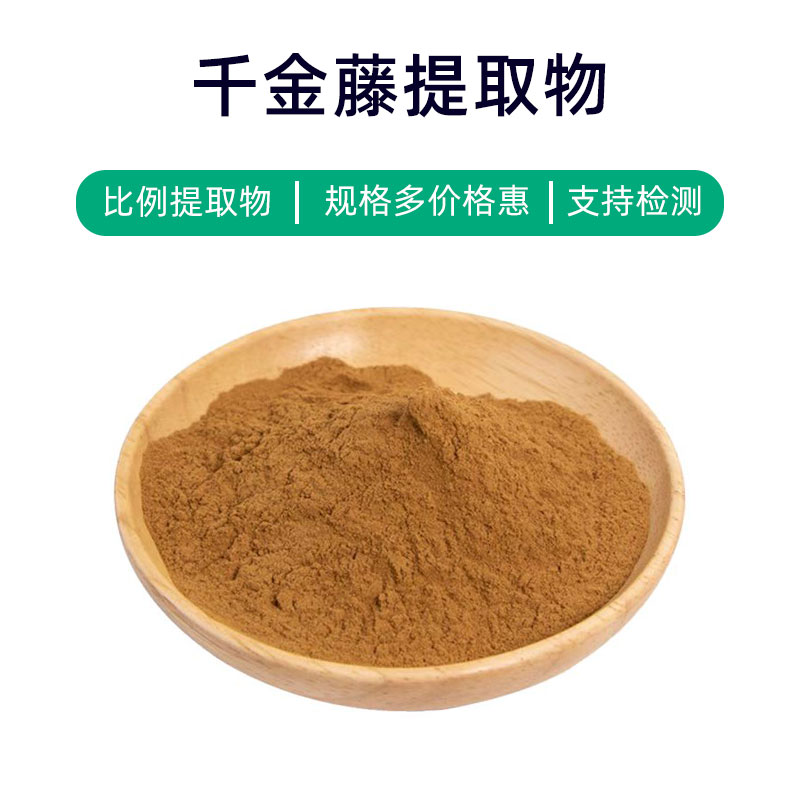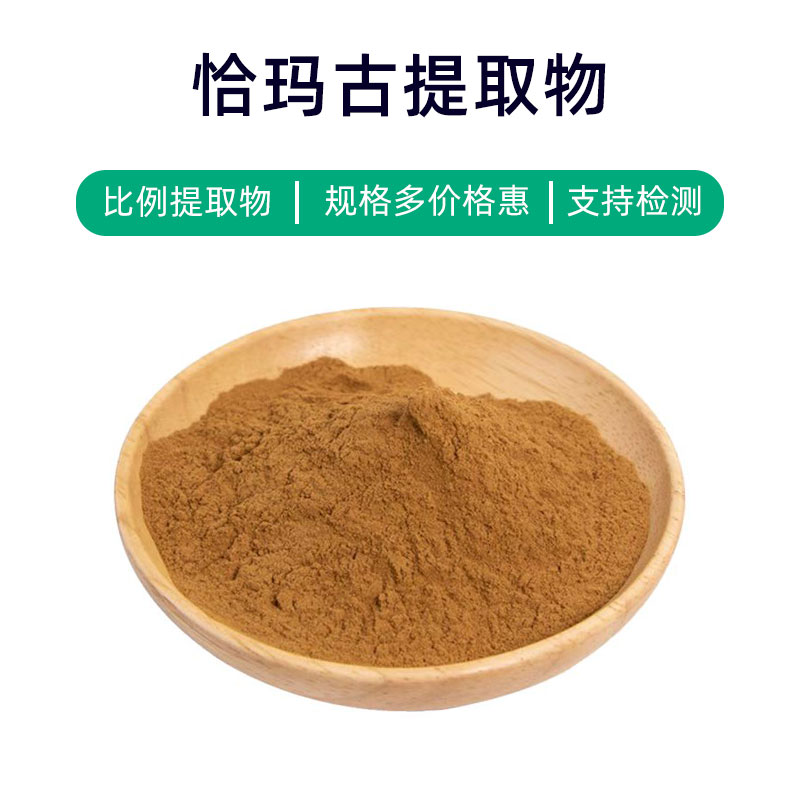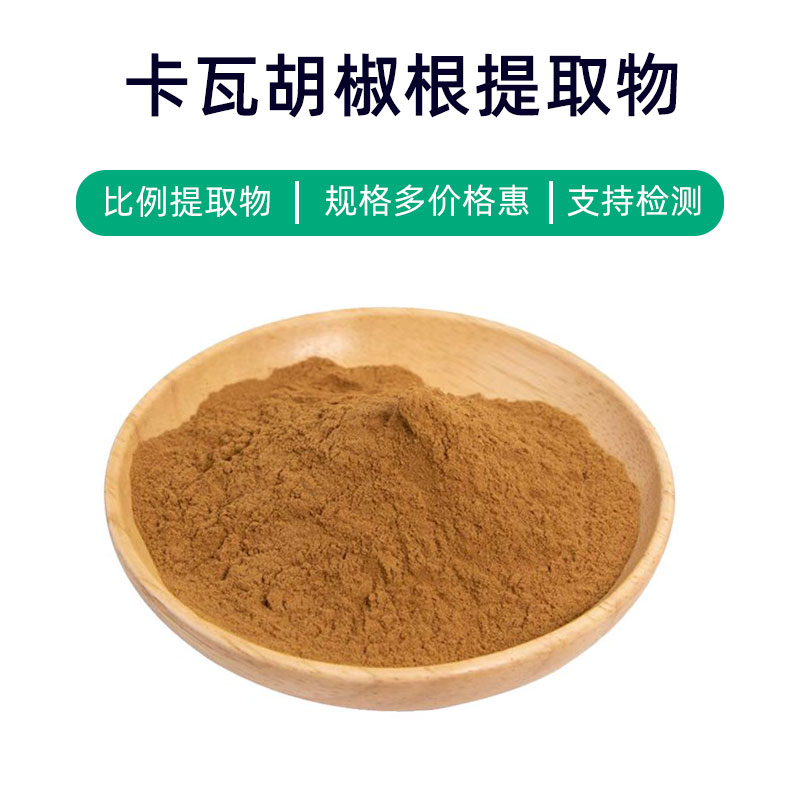Betel Nut Peel Extract Product Introduction
Betel Nut Peel Extract is a plant extract derived from the outer peel of the betel nut (Areca catechu). Its main components include active ingredients such as tannins, alkaloids, and volatile oils. Betel Nut Peel Extract has various effects and applications.
Firstly, Betel Nut Peel Extract is rich in tannins, which have astringent and antibacterial properties. It can be used in skin - care products to help tighten pores and condition the skin.
Secondly, the alkaloids in Betel Nut Peel Extract have certain antioxidant and anti - inflammatory effects. It can be used in anti - aging products to help reduce skin inflammation and soothe skin discomfort.
In addition, Betel Nut Peel Extract also has a certain anesthetic effect and can be used in oral - care products such as toothpaste and mouthwash to help relieve oral discomfort.
In general, Betel Nut Peel Extract has broad application prospects in the fields of cosmetics and oral - care products. Its effects cover multiple aspects such as skin care, anti - aging, and oral care, making it a promising natural plant extract.
Betel Nut Peel Extract Production Process
The production process of Betel Nut Peel Extract usually includes the following steps:
- Raw Material Preparation: Select high - quality betel nut fruits and clean the outer peels of the fruits to remove impurities and dirt.
- Slicing and Drying: Cut the cleaned betel nut fruits into thin slices or small pieces, and then dry them through natural sun - drying or oven - drying methods to ensure that the moisture content of the betel nut peels reaches the appropriate standard.
- Crushing and Grinding: Crush or grind the dried betel nut peels into powder, which facilitates the extraction of the target components.
- Extraction Process: Use suitable solvents (such as ethanol, water, acetone, etc.) to extract the betel nut peel powder. Common extraction methods include soaking extraction and supercritical fluid extraction. The parameters such as extraction temperature, time, and solvent concentration need to be reasonably controlled.
- Filtration and Concentration: Filter the extracted mixture to remove impurities, and then recover the solvent through a concentration device (such as an evaporator) to obtain the concentrated extract.
- Product Separation: Separate the concentrated extract using methods such as chromatography and freeze - separation to isolate the target active components.
- Drying and Refining: Dry the separated target extract to remove residual solvents and moisture, obtaining the dried Betel Nut Peel Extract. During this process, refining treatment may also be carried out to improve the purity and activity of the product.
- Packaging and Storage: Finally, package the Betel Nut Peel Extract, usually in a sealed packaging method to ensure the quality and stability of the product. During storage, avoid direct sunlight, high - temperature, and humid conditions to maintain the product's quality and activity.
Betel Nut Peel Extract Effects, Functions, and Side Effects
Betel Nut Peel Extract has various effects and functions, mainly manifested in the following aspects:
- Antioxidant Effect: Betel Nut Peel Extract contains rich polyphenolic compounds, which have strong antioxidant effects. It helps to scavenge free radicals, protect cells from oxidative damage, and delay the aging process.
- Anti - inflammatory and Antibacterial Effects: The active components in Betel Nut Peel Extract have certain anti - inflammatory and antibacterial effects. It can be used to relieve skin inflammation, eczema, etc., and has a certain inhibitory effect on some bacteria and fungi.
- Liver - Protecting Function: Studies have shown that some components in Betel Nut Peel Extract have a protective effect on the liver. It can reduce liver damage, promote the repair and regeneration of liver cells.
- Improving the Digestive System: Betel Nut Peel Extract has a certain protective effect on the digestive system. It can relieve gastrointestinal discomfort, promote the secretion of digestive juices, and increase appetite, and has a certain auxiliary effect on gastroenteritis, indigestion, etc.
- Anti - allergic Effect: Some studies show that the components in Betel Nut Peel Extract have a certain anti - allergic effect and can relieve the symptoms of allergic diseases such as allergic rhinitis and skin allergies.
The side effects of Betel Nut Peel Extract are relatively few, but the following points need to be noted:
- Excessive Use May Cause Digestive Discomfort: Long - term or excessive use of Betel Nut Peel Extract may lead to indigestion, gastrointestinal discomfort, etc. It should be used as directed by a doctor.
2. Individual Allergic Reactions
Some individuals may experience allergic reactions to betel nut peel extract, such as skin redness and itching. It is recommended to perform a skin sensitivity test before use.
3. Interactions with Other Medications
When using betel nut peel extract, care should be taken to avoid interactions with certain medications to prevent reduced efficacy or adverse reactions.
Overall, betel nut peel extract offers various benefits, but attention should be paid to dosage and usage methods to avoid adverse effects. If there are any special circumstances or concerns, it is advisable to consult a doctor or professional.
Application Scenarios and Usage of Betel Nut Peel Extract
Betel nut peel extract is widely used in the pharmaceutical, food, and cosmetic fields. Detailed applications are outlined below:
1. Pharmaceutical Applications
- Traditional Medicine:
Betel nut peel extract is widely used in traditional Chinese medicine, mainly for clearing heat and detoxifying, reducing swelling, and relieving pain. - Modern Medicine:
In modern medicine, betel nut peel extract is used as an antioxidant, offering benefits such as liver protection, improving digestive health, and promoting wound healing. - Usage:
Common methods of use include oral and topical applications. For oral use, it can be incorporated into traditional medicine formulas, with the dosage depending on the condition. It is generally recommended to follow a doctor’s guidance.
2. Food Applications
- Betel nut peel extract is used as a natural colorant, preservative, and antioxidant in food processing.
- It can be added to food, beverages, and candies to enhance color and flavor while providing antioxidant and antibacterial properties.
- Dosage should follow national food safety standards and regulations regarding food additives.
3. Cosmetic Applications
- Betel nut peel extract is commonly used in skincare products, face masks, lipsticks, and other cosmetics for its antioxidant, anti-inflammatory, and antibacterial effects.
- It helps reduce skin inflammation, inhibit bacterial growth, and slow down skin aging, making it a key ingredient in many natural skincare products.
- Usage:
It can be directly added to cosmetics. The dosage should be adjusted based on the specific product formula and intended use.
Overall, betel nut peel extract, as a natural plant extract, holds significant application value in the pharmaceutical, food, and cosmetic industries. Its use should comply with relevant regulations and standards, with proper dosage and application methods to ensure product safety and efficacy. It is also advisable to consult a professional for better results.
Source Plant of Betel Nut Peel Extract: Botanical Characteristics, Distribution, and Growth Environment
The source plant of betel nut peel extract is the betel nut tree (Areca catechu). The following sections provide a detailed introduction to its botanical features, distribution, and growth environment:
1. Botanical Characteristics
- The betel nut tree is an evergreen tree belonging to the Arecaceae (palm) family. It has a tall and straight trunk with a full canopy. The leaves are long, elliptical, glossy, and have long, curved petioles.
- The inflorescence is panicle-shaped, with small white flowers. The fruit is oval or nearly spherical, turning reddish-brown when mature and containing betel nut seeds.
2. Distribution
- The betel nut tree is native to Southeast Asia, including countries such as India, Sri Lanka, Bangladesh, Thailand, Malaysia, and Indonesia.
- Due to its strong adaptability to tropical climates and high humidity, the betel nut tree is widely distributed in tropical and subtropical regions. It can grow at various altitudes, from lowlands to mid-altitudes.
3. Growth Environment
- The betel nut tree thrives in warm and humid climates with high sunlight exposure.
- It prefers loose, fertile, and well-drained sandy loam or loam soil and is sensitive to waterlogging and salinity.
- Its natural growth environment includes tropical rainforests, river valleys, and hillsides. It has a long growth cycle and requires ample water and nutrients.
The betel nut tree is not only the source of betel nut peel extract but also an important economic crop in some regions. Its growth environment and distribution characteristics make it valuable for both ecological and economic purposes in certain areas.
Processing and Storage of Betel Nut Peel Extract
The processing of betel nut peel extract typically involves the following steps:
- Cleaning and Drying: The betel nut peel is cleaned and dried to remove impurities and moisture.
- Crushing or Grinding: The dried betel nut peel is crushed or ground into a powder.
- Extraction: Suitable solvents are used to extract the active components from the powder.
- Filtration, Concentration, and Drying: The extract is filtered, concentrated, and dried to obtain the final betel nut peel extract.
Storage
- Betel nut peel extract should be stored in a dry, cool, and well-ventilated environment, avoiding direct sunlight, high temperatures, and humidity.
- It should be kept in airtight containers to prevent moisture absorption and oxidation, which could affect product quality.
- Regular quality checks should be performed, and the product should be used within its shelf life to maintain its effectiveness.
Monica Sun is a seasoned expert in the plant extraction industry with over a decade of experience in research and production. She specializes in the extraction and purification of plant active ingredients, focusing on driving innovation in natural product applications. Monica has participated in the development of multiple functional plant extracts, delivering high-value natural raw material solutions for the health food, pharmaceutical, and dietary supplement sectors.


















